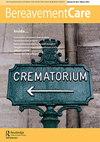Stewart’s Tree
Q3 Nursing
引用次数: 0
Abstract
This is an attractively illustrated book for very young children, three years and older, which deals with the painful and sensitive situation of the death of a baby brother or sister just after birth. There is very little literature available aimed specifically at young children who are bereaved in this way so in that respect it is a very welcome addition. As with all books for this age group, there are more pictures than words, and adults reading the book to small children need to be able to extrapolate and wonder with the child about what is going on based on visual or verbal clues; ‘ What’s happening here?’, ‘Do you remember when we were in the hospital?’ and so on. Although there is a short section at the back with edited extracts from a Sands (Stillbirth and Neonatal Death Charity) publication, I could imagine grieving parents, stunned by grief as they often are, might overlook that; it might have been better to put that information at the beginning. Quite a lot of space is devoted to the often misunderstood idea of ‘losing’ the baby and this is good. I think other unhelpful but commonly used expressions could have been incorporated however ‘going to sleep’ being the obvious example. Children at three or four cannot understand the permanency of death and this isn’t really addressed either which is a shame. I really liked the idea of a cot as a spaceship and the illustration is lovely; that seems an inspired choice. Equally good is the description of how Stewart wasn’t strong enough to live outside of Mummy’s tummy which avoids later worries the surviving sibling may have of being ill or catching something. Explaining death through the loss of senses is usually helpful for young children and this is done well, as is the message he will never be forgotten. The ‘d’ word is used once, which is helpful, but perhaps could have been used more often or in other forms ‘died’ and so on. The link to confusion about what happens is implied well (Why are all these cards arriving? Why are people bringing soup?’) but I feel could have been made more explicit. Indeed the most obvious absence is the lack of reference to any feelings, either from the parents or relatives or from the child’s point of view and I think this is a real drawback. The illustrations could really have been used well here to show the range of feelings but they are rather neutral or ambiguous. Small children really need to be helped with giving words to the feelings they will observe in others and feel in themselves. Neither is there a reference to a funeral or where his body is now. In that respect the book might need to be complemented with other publications. 斯图尔特的树
这是一本插图精美的书,适合三岁及以上的幼儿,讲述了婴儿兄弟姐妹刚出生就死亡的痛苦和敏感情况。很少有专门针对以这种方式失去亲人的幼儿的文献,因此在这方面,这是一个非常受欢迎的补充。与这个年龄段的所有书籍一样,图片多于文字,给小孩子读这本书的成年人需要能够根据视觉或语言线索推断并与孩子一起思考正在发生的事情;”这里发生了什么事你还记得我们在医院的时候吗?”尽管后面有一小段是Sands(死产和新生儿死亡慈善机构)出版物的编辑摘录,但我可以想象,悲伤的父母可能会忽视这一点,因为他们经常被悲伤惊呆;把这些信息放在一开始可能会更好。有相当多的篇幅用于“失去”婴儿这一经常被误解的想法,这很好。我认为其他无益但常用的表达方式也可以被纳入其中,但“入睡”是一个明显的例子。三四岁的孩子无法理解死亡的永恒性,而这一点也没有得到真正的解决,这是一种耻辱。我真的很喜欢把婴儿床当作宇宙飞船的想法,插图很可爱;这似乎是一个鼓舞人心的选择。同样好的是,斯图尔特的身体不够强壮,无法在妈妈的肚子之外生活,这避免了后来担心幸存的兄弟姐妹可能生病或感染了什么。通过失去感官来解释死亡通常对年幼的孩子很有帮助,这一点做得很好,这也是他永远不会被忘记的信息。“d”这个词用过一次,这很有帮助,但也许可以更频繁地使用,或者以其他形式使用“dead”等等。与对发生的事情感到困惑的联系隐含得很好(为什么所有这些卡片都到了?为什么人们带汤来?)但我觉得本可以更明确。事实上,最明显的缺失是没有提及任何感受,无论是来自父母或亲戚,还是从孩子的角度,我认为这是一个真正的缺点。这些插图本可以很好地用来展示情感的范围,但它们相当中性或模棱两可。小孩子真的需要帮助他们用语言表达他们在他人身上观察到的感受和在自己身上感受到的感受。既没有提到葬礼,也没有提到他的遗体现在在哪里。在这方面,这本书可能需要补充其他出版物。
本文章由计算机程序翻译,如有差异,请以英文原文为准。
求助全文
约1分钟内获得全文
求助全文

 求助内容:
求助内容: 应助结果提醒方式:
应助结果提醒方式:


